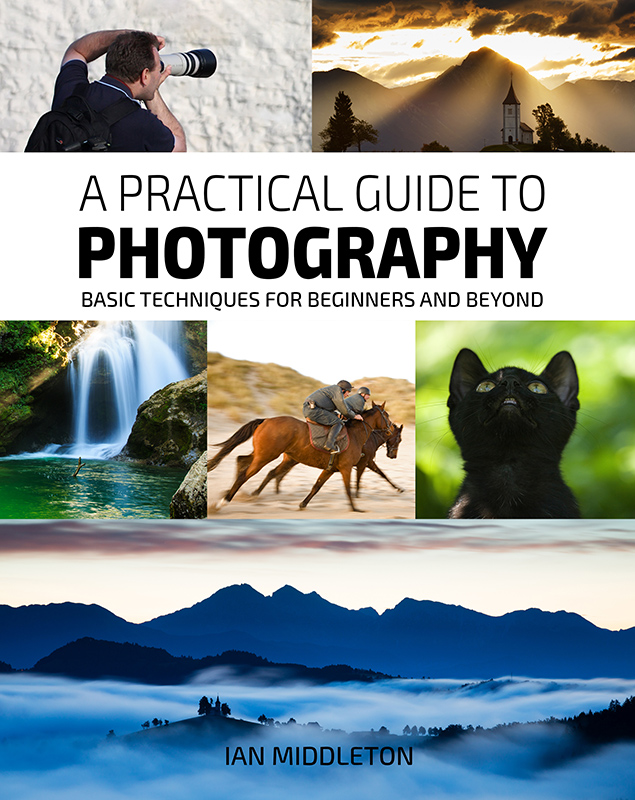Why bad weather should not stop a workshop
Sadly the weather on my autumn in Slovenia workshop was not what we’d hoped for. However, bad weather should never stop a workshop. In fact, it presents an opportunity to show just what you CAN photograph and how best to utilise the conditions, or plan around the worst of it.

Day 1 - Pericnik Waterfall
Once everyone was checked in at the guesthouse, we headed straight out. Overcast days are ideal for photographing water, so I took the group straight to Pericnik Waterfall.
It was the perfect kind of overcast, in other words there was still some great diffused light breaking through bringing out the vibrancy of the autumn colours.
This shot here is not as easy as it seems. It is taken from the road below, however you need to find the sweet spot to ensure that the waterfall is not obscured by some hard to spot branches. I made sure my participants were aware of this.
While the weather was not the best, the colours in Slovenia this year were at the best I’ve seen them for a very long time. Pericnik Waterfall is located in the Vrata Valley, deep in the heart of the Triglav National Park. This valley leads into the Julian Alps, and is truly one of the most beautiful places to be in autumn.
It is possible to walk behind the lower waterfall and shoot from there too.


Bled Castle at night
It was clear there would be no sunset this day, so I decided to take the group back to Bled and photograph the castle and Saint Martin’s Church from a viewpoint most tour groups never get to see.
One of the reasons I choose to stay at Penzion Mayer, is its prime location just a 5-minute walk from the lakeside and this viewpoint. If participants arrive early, or want to stay a few days longer, it’s the ideal place to be.
I made sure we got back in time for the Blue Hour with the plan to capture this scene. Again, while the cloud may have been thick, there was a full moon rising in the east and the strong light from this moon helped to lighten up the sky for longer, and provided us with a much longer and more interesting blue hour.
The low cloud and drizzle was also reflecting the lights from the castle and church. On moonlit evenings, I find that setting your white balance to fluorescent gives a lovely purplish tint to your scenes at blue hour, and also reduces the redness as it gets darker.
The reflected cloud in the sky and water also makes it great for black and white shots.






Day 2 - Lake Bled & Predjama Castle
A drizzly morning, and the worst day of the workshop forecast. Other sunrise locations such as Jamnik Church or Saint Thomas church would clearly be a washout. Best option was to head down to the lakeside where I knew that again the low cloud and thick mist from the rain would give us at least an extended blue hour. Additionally, as the lights of the church are on a sensor, the thick cloud meant that the church lights stayed on for longer than usual.
Isolated in the mist
Ordinarily, autumn is a time for lovely misty mornings. Well, while this wasn’t the kind of misty morning I had in mind for my group, the thick cloud still helped to isolate the church and offer some ethereal effect. Again, the setting full moon helped add some pleasing colour to the blue hour, and the lit church helped to add some light to an otherwise dull scene.

Bad weather can sometimes be your friend
Once the lights finally went out, and the morning was at its brightest, I took the group around to an area of trees where the colourful autumn leaves on the overhanging branches could be used to frame the church isolated in the mist. The bad weather in this case was perfect, because not only did it help to balance the brightness between the darker enclosed area of the foreground trees with the more open scene of the lake and church, but also the mist blocked the scenery behind the church, which would have killed the simplicity of the photos below (you will see the background in a photo from the last day).


Heading west to avoid the worst of the weather
Thankfully, modern technology means we can always try to be one step ahead of the weather. I use the weather & radar app, and it showed that the worst of the rain would start in the west in the morning, then move northeastward as the day progresses. Therefore, after breakfast, I decided to head west in the hope of driving through the worst of it and take the group to photograph another scene that also works well even in bad weather.
The fabulous Predjama Castle
Predjama Castle is a medieval marvel nestled within a towering 123-metre cliff face in the karst region of western Slovenia. This unique fortress, built in the 13th century, is renowned for its dramatic location and rich history. The castle’s strategic positioning within a huge limestone cave system provided natural defenses, allowing its inhabitants to withstand sieges for centuries.
As I had hoped, we drove through the rain and came out the other side to cloudy skies, but no more rain for the rest of the day. Ordinarily, the best time to photograph this scene is in the morning, because the castle faces east and in the afternoon the sun would be behind the cliff face, meaning we would be shooting into the light. So once again, the bad weather was our friend and the diffused light meant we could photograph it in the afternoon.

A brave knight caught with his pants down
There is an interesting legend about Erasmus of Predjama, a knight of noble lineage. His home was Predjama Castle. This natural wonder, with its intricate network of tunnels and secret passages, was a sanctuary for Erasmus and his loyal followers.
In the 15th century, Erasmus found himself at odds with the Holy Roman Emperor, Frederick III. A dispute over honour and justice led to a bitter feud, forcing Erasmus to seek refuge in his ancestral castle. The Emperor, determined to capture the defiant knight, laid siege to Predjama, encircling the fortress with his army.
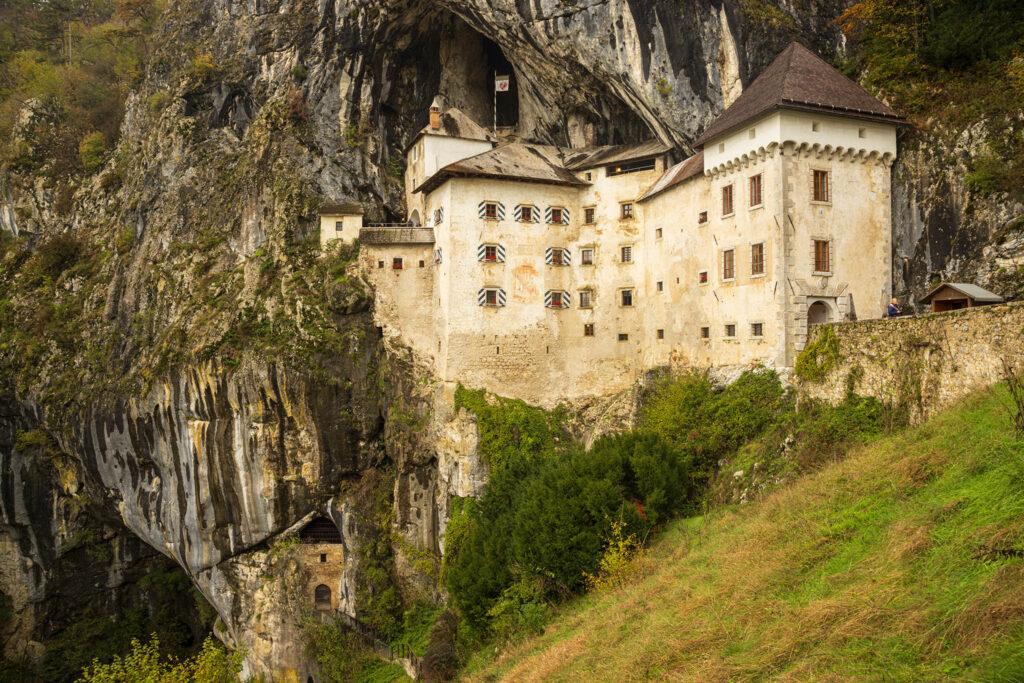
For months, the siege raged on. Erasmus utilized the castle’s secret tunnels to resupply his troops and launch surprise attacks. The defenders, inspired by their leader’s courage, held firm.
However, as the siege wore on, a traitor emerged from within the castle walls. A trusted servant, bribed by the Emperor, revealed the time and place where Erasmus would be at his most vulnerable; the outdoor toilet on the outer fringes of the castle walls. When the time came for Erasmus to “take care of business” the traitor gave the signal. The cannons fired a deadly assault, and Erasmus was literally caught with his pants down.
Seasonal Lakes
Once again there would be no sunset, so for the latter part of the afternoon I took the group to the nearby seasonal lake of Planina. The karst limestone region is dotted with numerous seasonal lakes that fill up after periods of heavy rain and slowly drain away through sinkholes to feed the underground rivers and tunnels. All the rain of late meant that Planina was full already.
It was raining when we got back to Bled.

Day 3 - Jamnik Church & Mostnica Gorge
The church of Saints Primus and Felician in the village of Jamnik is special mostly because of its stunning backdrop. Set against the majesty of Mt. Storzic in the Kamnik Alps, it has become a prime destination for all photography tour groups.
I always get my group here well before sunrise, firstly because the blue hour is good due to the church being lit, secondly to give the group time to setup and help them think about how they want to shoot the scene, and finally because soon after I know that many other tour groups will be there so I want to be sure my group has the best pick of the spots. Sure enough, soon after the road was lined with photographers.

Another misty morning
The weather still showed no sign of clearing, but Jamnik is a good option even in the mist; especially at blue hour. Unlike Saint Thomas church, which is much further away and not lit, Jamnik is closer to the viewpoint and the mist needs to be very thick for it to disappear.
Well, on this morning it really was thick, and for most of the time the church remained a mystery. However, she did afford us all a couple of beautiful moments.


Mostnica Gorge
As I mentioned earlier, on cloudy or overcast days the best option is to head to waterfalls or rivers. So I took the group into the Bohinj Valley to the lovely Mostnica Gorge.
The Mostnica Gorge is a stunning natural wonder. This picturesque gorge is carved by the Mostnica River, which cascades through the valley, creating crystal-clear pools and rushing rapids. The start of the gorge is incredibly deep, but as you walk a bit further in you descend to the waterside where there are several nice locations for photography.
It’s a great place to practice the effects of different exposure lengths.
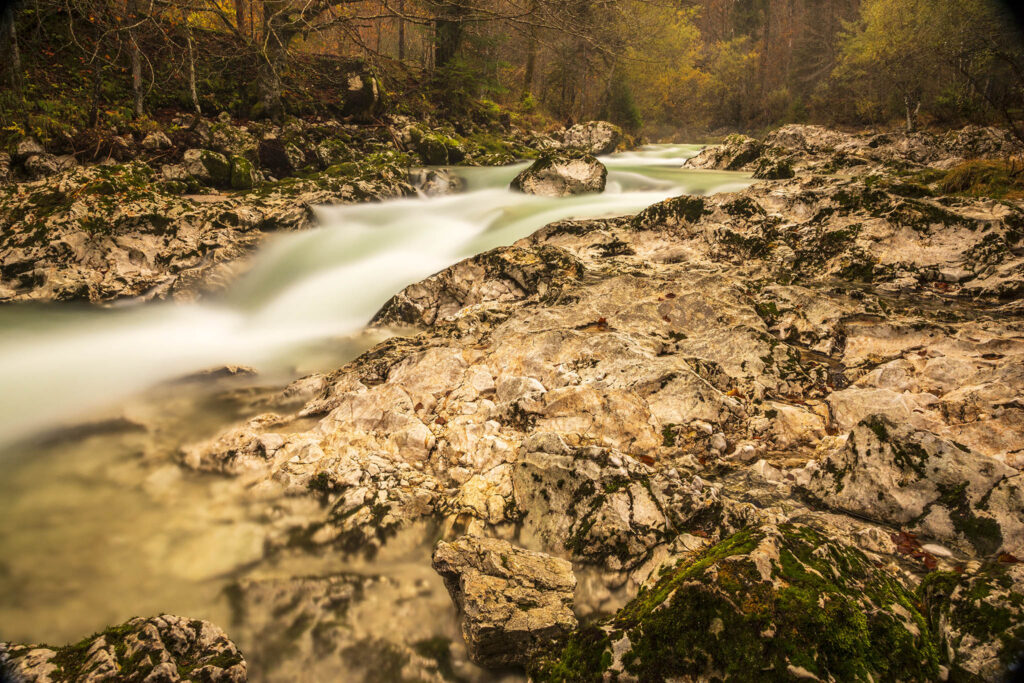






Day 4 - Saint Thomas Church - Lake Jasna, Russian Chapel & back to Jamnik
I had put off the morning at Saint Thomas for as long as I could in the hope that the weather would clear. However, I could put it off no longer. The viewpoint from the church is very far, and the mountains behind even more so. For this reason, you ideally need a good clear morning; and even more ideally some high cloud. The beauty of this view is the mist down in the valley surrounding the church and hill, and the Kamnik Alps mountains in the backdrop, all with the soft low light of the sun rising off to the right and streaming through the valley.
Well, we did get the mist in the valley and some lovely ethereal effects, just no mountains or colour. Still, this view is magical even in conditions such as this.








Lake Jasna
The weather was forecast to clear later in the afternoon, so I took the group first to Lake Jasna and then up the Vrsic Pass to the Russian Chapel.
The colours at Vrsic were beautiful, but sadly the incredible mountain view that normally dominates this scene remained hidden. That stubborn cloud continued to hug those peaks and refused to budge. But the colours more than made up for it.


The Russian Chapel
The Russian chapel is also a place that can be photographed even on overcast days. The chapel is a poignant reminder of the sacrifices made during World War I. Built by Russian prisoners of war in 1916, this small wooden chapel serves as a memorial to those who perished while constructing the treacherous road over the pass. Its simple yet beautiful architecture and serene atmosphere make it a lovely scene to photograph, and the wooden exterior blends beautifully with the autumn colours.

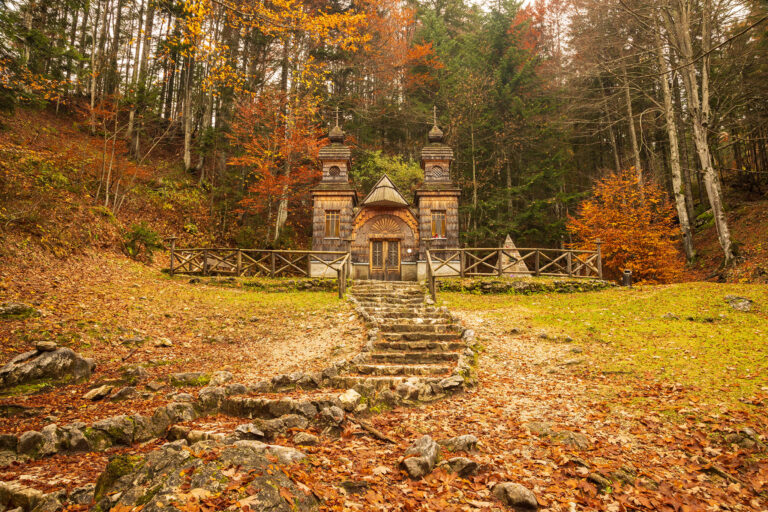
One more try at Jamnik
The rest of Vrsic was in thick mist, so looking once again on the weather app, the satellite showed how the weather was clearing from the west and east, so I decided to whizz the group back to Jamnik to capture it with the mountains visible this time.
Jamnik, while often best at sunrise, can also be photographed at sunset and dusk, and this time we were treated to its true beauty. The conical peak of Mt. Storzic sitting right behind the church, and then Mt. Kocna and Mt. Grintovec off to the right, is what makes this scene all the more special.
A perfect end to the day.

Day 5 - Lake Bled in all its glory
On the final morning the skies had eventually cleared, and what an incredible morning it was too! Helped once again by the moonlight at blue hour, and then some lovely wisps of cloud catching the golden light of sunrise. It is mornings like this that Bled is truly magical.


















Recent Articles
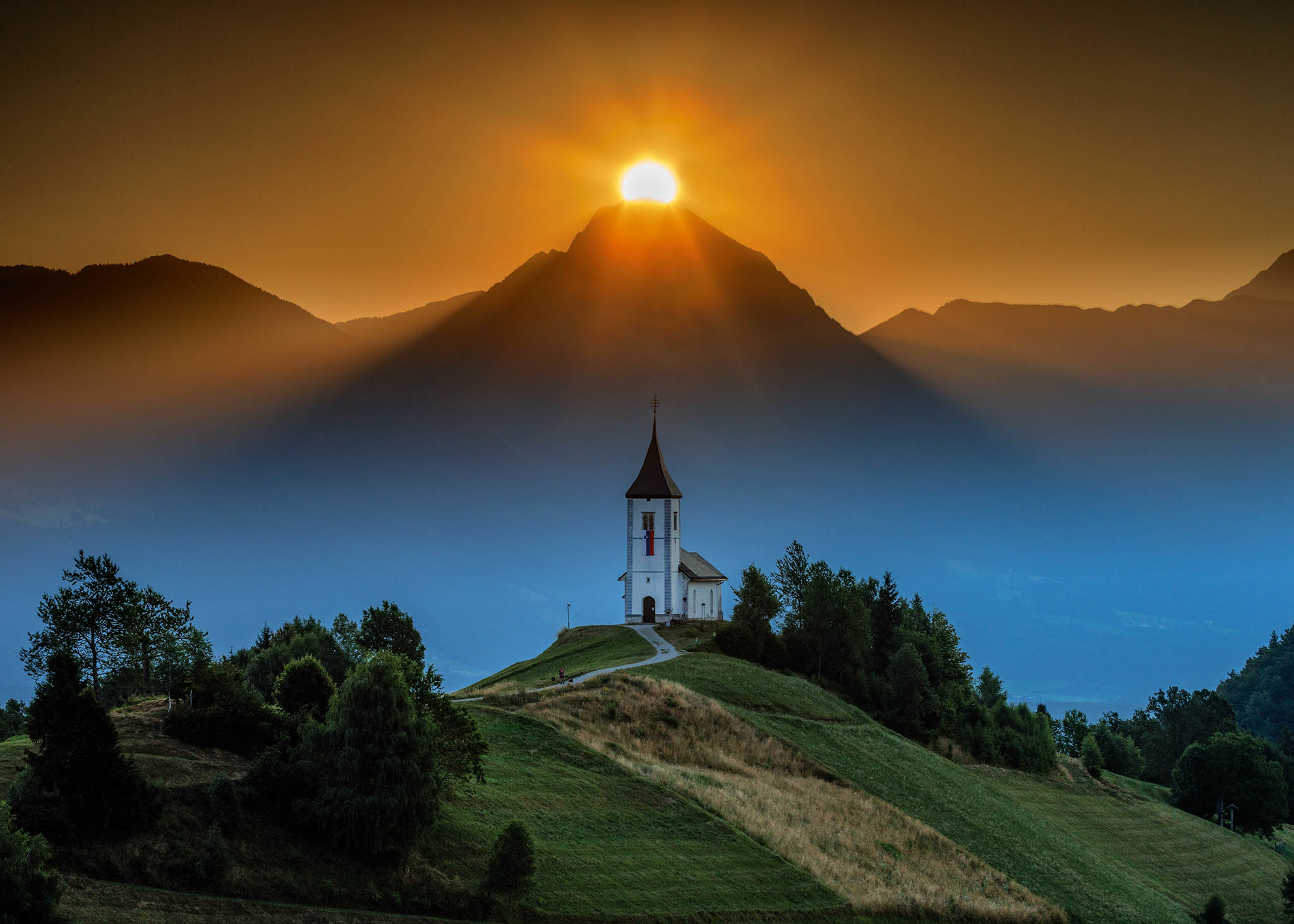
Exposure Bracketing & Lens Flare Removal with Shutter & Photoshop
How I used Exposure Bracketing & Lens Flare Removal Techniques to capture these stunning images In this tutorial, I show



















